The pet insurance market, valued at US$ 8.32 billion in 2022, is expected to reach US$ 26.44 billion by 2030, growing at a CAGR of 15.6% from 2023 to 2030 according to a new report.
The increasing rate of pet adoption globally is a primary driver for the pet insurance market. With more families acquiring pets, the need for health coverage for pets is rising. According to the American Pet Products Association (APPA), approximately 90.5 million cats and 63.4 million dogs were kept as pets in the US in 2022.
The rise in pet care costs and awareness about insurance further fuel market growth. Over the past decade, the average vet bill for accidents and illnesses has increased by 60%, prompting more owners to opt for pet insurance. Innovations in insurance plans providing flexible and customised coverage options also support market growth. However, low pet insurance penetration in developing regions remains a key challenge.
Rising Pet Ownership Driving Demand
Pet ownership has been rising significantly worldwide over the past few decades. More people now see their pets as family members. According to the APPA, around 67% of households in the US own a pet. In Canada, pet ownership stands at around 60%, and similarly high rates are seen in Western European countries. As pet owners grow emotionally and financially attached to their pets, they seek insurance options to cover unexpected medical costs. This growing human-pet bond worldwide is a key driver for the pet insurance market.
Increasing Veterinary Healthcare Costs
Advanced veterinary care and facilities have led to increased costs of treating pets. Several pet diseases now have highly effective but expensive treatment options available, similar to human healthcare. For example, cancer treatments, orthopaedic surgeries, and emergency care costs have grown substantially. The average veterinary bill in the US grows 5-10% annually. Such escalating costs have made pet insurance an affordable option even for common pet illnesses and injuries. Owners do not want to compromise on their pet’s health due to financial constraints, boosting the appeal of pet insurance that shares some of the financial burden during medical emergencies and procedures.
Market Restraints
Despite the growth opportunities, low awareness about pet insurance options poses a significant challenge. Many pet owners remain unaware of the types of available policies, coverage limits, costs, and claim processes. This lack of consumer education limits the adoption of insurance. Insurance companies find it difficult to promote the value of regular veterinary care funded through insurance plans. Only a fraction of pet owners in major developed markets currently own an insurance policy. Raising education and marketing efforts significantly can help address this restraint over the long term.
Untapped Growth Prospects in Developing Markets
While traditional markets in North America and Western Europe have seen considerable penetration, developing regions including Asia Pacific, Latin America, Eastern Europe, and the Middle East offer significant untapped prospects. Pet ownership and associated healthcare spends are rising steadily in these emerging economies as disposable incomes increase. However, medical insurance, including pet insurance, remains very low penetrated currently. As quality veterinary facilities improve and awareness about insurance value grows, rates of insured pets can potentially increase multifold from the current low levels across developing world markets. Insurance providers have a big opportunity to establish presence and promote policies designed for these new consumer segments.
Shift Towards Comprehensive Cover
Traditionally, most pet insurance plans offered one-year renewable covers focusing on accidents and illnesses. However, newer customizable policies like lifetime coverage or family plans covering multiple pets simultaneously have gained popularity recently. These reflect owners seeking more comprehensive protection against costs throughout a pet’s lifetime. It also suits owners with multiple pets at home. Many see this as a better long-term investment than annual renewal, especially considering steady veterinary inflation. Insurance providers are making such all-inclusive options more affordable and user-friendly. This trend indicates consumers preferring robust but long-term insurance commitments for complete peace of mind over their pets’ health needs.








